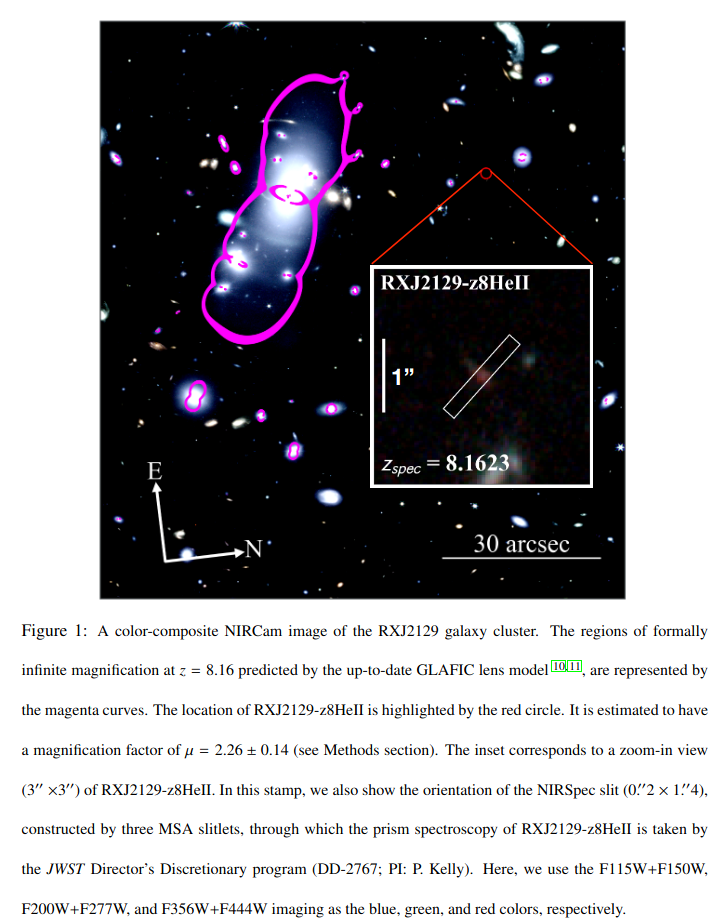- cross-posted to:
- astronomy@mander.xyz
- cross-posted to:
- astronomy@mander.xyz
A group of astronomers poring over data from the James Webb Space Telescope (JWST) has glimpsed light from ionized helium in a distant galaxy, which could indicate the presence of the universe’s very first generation of stars.
These long-sought, inaptly named “Population III” stars would have been ginormous balls of hydrogen and helium sculpted from the universe’s primordial gas. Theorists started imagining these first fireballs in the 1970s, hypothesizing that, after short lifetimes, they exploded as supernovas, forging heavier elements and spewing them into the cosmos. That star stuff later gave rise to Population II stars more abundant in heavy elements, then even richer Population I stars like our sun, as well as planets, asteroids, comets and eventually life itself.
About 400,000 years after the Big Bang, electrons, protons and neutrons settled down enough to combine into hydrogen and helium atoms. As the temperature kept dropping, dark matter gradually clumped up, pulling the atoms with it. Inside the clumps, hydrogen and helium were squashed by gravity, condensing into enormous balls of gas until, once the balls were dense enough, nuclear fusion suddenly ignited in their centers. The first stars were born.
stars in our galaxy into types I and II in 1944. The former includes our sun and other metal-rich stars; the latter contains older stars made of lighter elements. The idea of Population III stars entered the literature decades later… Their heat or explosions could have reionized the universe

More information:


